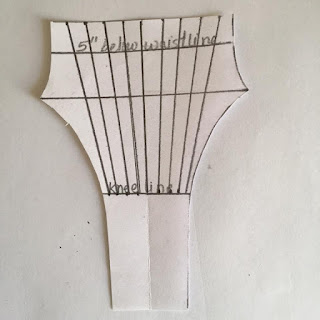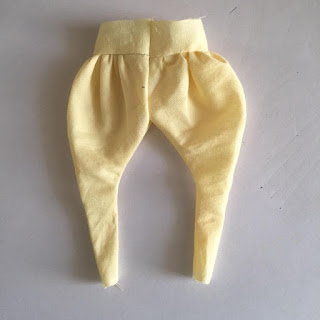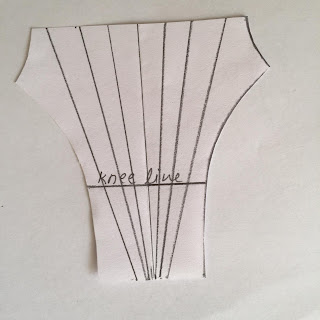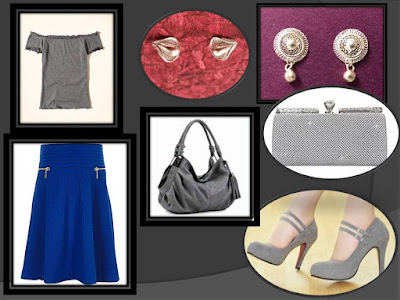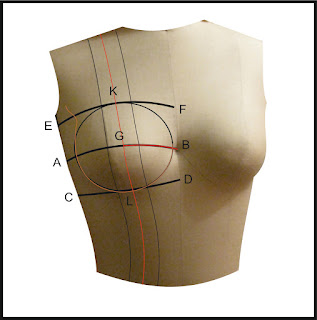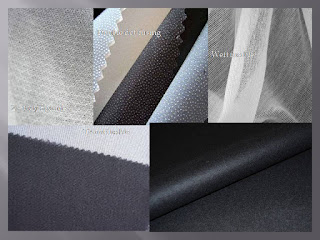Management and fashion
About fashion , some management , some humor , some facts , some fiction and more . Keep reading to know more about the blog and its writer . Happy reading !
Thursday 11 May 2017
Styling formals with traditional artwork !
I Introduced filigree in my wardrobe , and I am loving it !
Although I am a designer I am
not very fond of different types of jewellery and prefer to stick to my gold earrings and chain. A few days
back my Friend introduced me to the jewellery of famous art work from Odisha ‘filigree’
or ‘tarakasi’. I have studied about this art ,taught about this art but never
thought about including it in my wardrobe and jewellery box.
Well, here the challenge was as I
am usually in formals and at times in casuals I was not comfortable with the idea of wearing traditional jewellery. And also who would go to shop for authentic artwork??? Well, today I had with me authentic filigree earrings and studs and just had to team it with my formals tastefully and aesthetically to receive the compliments! Who doesn't like compliments???
Although
I was a little apprehensive about it initially but it came out effortlessly beautiful
and for a change I came out of my regular gold earrings and chain J!
I am posting style boards here
that would help you to incorporate these artwork into your closet.
There were reasons I introduced
filigree jewellery into my closet :
- It is beautiful
- It is inexpensive
- To encourage the artisans by buying their artwork. (Even artists have bills to pay!)
Now , a little gyan about
Tarakasi
Tarakasi is a form of filigree work from Odisha. A 500 year
old traditional art kept alive by a few dedicated highly skilled artisans. It’s
a fine wire work wherein mostly flowers , birds ,animals and other trinkets are
made. It is also used to embellish backdrops which can be expensive and time consuming.
Generally speaking when we talk about filigree or tarakasi
the name Cuttack comes to mind as this art has been thriving there since ages.
Although it’s a common understanding that the art may have come to Odisha from
Indonesia due to similarities between the workmanship. But I would like to
accept the art by its face value. It is beautiful and delicate looking . Fine wire work which completely defines me ...
Monday 28 December 2015
Dart width calculation
Dart
width calculation
Here, I would like
to introduce you to dart
width calculation.
1. Let us
mark the apex
point as G.
2. Measure from
center front to the side
seam passing the
measuring tape over
the highest part
of the bust marked as points A
and B as
shown in the
diagram.
3. Measure just
below the bust
at empire line
level from center
front to side seam marked
as points C
and D as
shown in the
diagram.
4 . Measure just
above the bust
at chest level
from center front
to side seam marked as points
E
and F as
shown in the
diagram.
5. Bust root
is a circle
so to draw
the circle with
radius = GB – ½
″
for eg. If GB = 5″
radius of
the required circle
for bust base = 5″ - ½ ″
= 4.5″
6. Now, for dart
width at empire line level
let us consider the
dart width as ‘x’
so,
x = AB – CD
for eg :
AB = 10″
CD = 7.5″
So, x = 10″ -
7.5″
= 2.5″
y = AB – EF
for eg :
AB = 10″
EF =8″
So, y = 10″ - 8″
= 2″
So the
dart width at empire
line level is 2.5″
and at chest
level is 2″
10. Taking G
as the center
point draw a
circle with the
obtained radius in
step 5
11. Draw a
straight line parallel
to center front
from point G
upwards to shoulder
and
downwards to
hemline and mark
the points of
intersection of this
line with the
circle as K
and L.
12. Now with
a compass mark
the dart width with
radius at
empire line
level = ½ x on either side
and chest
level = ½ y on either side
here;
dart width
at empire line
level ; L= ½ x
= ½ (2.5″)
= 1.25″ on either side
Similarly ,
dart width at
chest level ; K = ½ y
= ½ (2″)
= 1 ″ on either
side
Sunday 27 September 2015
Inter facing part – II : Fusible and non-fusible fabrics
Inter facing part – II
Fusible and non fusible interfacings
are available in woven , non woven , self fabric , stable , stretch , all bias
,knit , warp and weft insertions .
Woven interfacings : woven have
similar grain like any other woven fabric with warp and weft . Woven interfacings
are available in both fusible and non fusible types . It should be cut on the
same grain as fashion fabric that will maintain its natural drape and look as
desired. If you are using woven interfacing for knit make sure to cut the
interfacing on true bias so as to ensure the natural characteristic of stretch
is preserved. In case of knits interfacings are used to prevent excessive
stretch and sagging.
Self fabric : Are non fusible
closely woven fabrics that can be used as interfacing if it meets the requirement
of fashion garment and present the desired look. These fabrics have propensity
to add bulk so should be used after due consideration.
Non – woven : Are felts where fibers
are bonded together to form a fabric. Non – woven interfacing are generally
fusible and have a paper like appearance with adhesive on one side. Though they
have little flexibility but do not lose their shape and impart board like appearance
when fused to a fashion fabric.
Stable : Like the name suggests has
little or no ‘give’ in any direction and
hence maintains the composer of the fabric. Should be used where the garment
weight is to be carried by a small
section like shoulder panels.
Stretch : There is stretch in cross
but is stable in warp or length. These are suitable to be used in the fashion
fabric where the natural stretch in to be maintained without compromising the
required drape.
All-bias : This interfacing is
stretchable in all directions with more stretch in weft or cross grain. Most
suitable to be used in combination with knit fashion fabrics and woven with
more than 10% spandex to retain the characteristic of the fabric.
Knit : Knit interfacing is soft and
stretches in all directions without much constraint. Are mostly fusible
interfacing suitable to be used in combination with softer fashion fabrics
where you do not want to change the hand, drape and flexibility of the fabric.
Weft – insertions and warp –
insertions : Is made on knit machine where one of the warp or weft yarn is
inter-looped and the other yarn is inserted. The insertion of this extra yarn
into the knit makes the interfacing more steady. These interfacings are softer
while weft interfacing has most stretch on bias, warp has more stretch on cross
grain as the warp yarn is inserted in the chevron pattern. Both come in fusible
and need lower temperatures and hence are suitable for fashion fabrics that
cannot be subjected to higher temperatures of ironing machines.
·
When using very light weight to light weight
sheer fabrics like organza , voile ,
georgette , chiffon, crepe, challis ,
calico , chambray , interlock knit , jersey , single knit , batiste which are
commonly used in making dresses, light weight suits , active sportswear etc.
you can use any of given interfacing for soft effect like batiste , sew – in
sheer or regular organza, very light weight stretch or non – woven or self
fabric interfacing.
Whereas
for crisp effect you should use any of the given interfacing like organdy ,
sew – in or fusible light weight , sheer woven or non – woven
, fusible knit.
·
When using
medium weight fabrics for fashion fabric like linen , light weight denim ,
poplin , flannel , satin , chino , velour , stretch terry , double knit etc.
which are used for making dresses , light weight suits active sportswear and
likewise you can use any of the given interfacings for softer effect like
fusible or non – fusible woven , regular or stretch light weight to medium
weight non – woven or fusible knit .
Whereas you can use fusible or non – fusible light weight to medium
weight canvas , can – can net , medium weight net , light weight to medium
weight horse hair for crisper effect .
·
When using heavy weight fabrics for fashion
fabric like corduroy , tweed , worsted , gabardine etc which are for making
jackets , suits , coats and likewise you can use soft light weight fusible or
non – fusible canvas or any medium weight fusible or non – fusible non – woven ,
fusible heavy weight tricot .
And use
sew – in or fusible medium weight woven
hair canvas , horse hair , fusible
heavy weight non – woven for crisper effect .
·
When making waistbands and craft belts use
fusible non – woven pre-cut strips of canvas or raffia , medium to heavy weight
knit braids , fusible fleece , for the required stability and durability.
Saturday 26 September 2015
Fashion fabric - Interfacing : Fusible and sew - in
Interfacing
Interfacing has become an integral
component in garment industry recently with designers , students , tailors
using interfacing for every garment they design and sew. I believe it is essential
to have a clear understanding of the product , purpose and fashion feature before
using it.
Now , do you find this confusing ?
Here I will explain interfacings that are commonly used in garment industry and
the key factors .
Interfacing is a layer of fabric either
sewn or fused to provide shape, steadiness and structure to garment .for eg. It
is used in plackets in buttons and buttonhole areas to avoid shape distortion
and stretch, in collars and cuffs to add crispness and in facings and lapels to
add stability and structure. In garmenting it is used to preserve the shape
while in costuming it is used to add drama or the desired theatrics.
There are two types of interfacings
used in the garmenting industry namely fusible and non – fusible or sew – in
interfacing.
Fusible
and non fusible
Fusible : Fusible interfacing are
easy to use and convenient in handling. You just need to iron the fusible
fabric on the wrong side of the fashion fabric which has heat activated
adhesive to stick completely to the fabric.
Non – fusible : Sew – ins or non
fusible like the name suggests are to be sewn to the fashion garment as second
layer. These are less likely to change the hand and feel of the fabric but
serve the purpose of adding volume , structure and opacity.Goats hair and horse
hair are two very good example of sew – in interfacings used in tailoring later
majorly being used in haute couture garments. Non – fusible are advised for
fabrics that display residual shrinkage like cottons where a fusible
interfacing can damage the look of the entire garment.
Fusible and sew – in interfacings
are available in woven , non – woven , knit , warp and weft insertions (knits)
Before one starts using the
interfacings it is essential to understand the key factors that guide the use
of interfacing : A appropriate and functional interfacing should be:
·
In coherence to the fashion fabric
in relation to fibre content , care , count , and conduct .
·
It should be or have the same
‘grain’ and ‘give’ as the fashion fabric with which it is being used. When
applied it should be in sync with the fashion fabric and when fusible
interfacing is used care should be taken that there are no bubbles , wrinkles ,
folds or creases .
·
Harmonize closely with the fashion
fabric in colour ; dark with dark and light with light . It should not alter
the colour of the fashion fabric and if an interfacing of suitable weight
cannot be procured one should go for lighter weight than heavier.
·
Provide apposite support needed to
improve or preserve the shape of the silhouette of the garment.
·
Should be used wisely and in the
appropriate place in a garment . It should suit
the pattern , design and garmenting condition .
Functions of
interfacing
- The purpose of interfacing is :
- To provide stability to the fabric preventing stretch and sagging .
- Tailored and refined seams like in corsets.
- Strengthen areas .
- Support restrained areas like necklines’ , armholes , hems etc.
- Stabilize belts , waistbands.
- Give smooth and flat board like body.
- Provide shape to areas like shoulders , collars , cuffs , etc.
Selecting interfacing
guidelines
Selecting
interfacing at times is so difficult that many sewers prefer to use the same
interfacing for all type of fabrics and all type of garments and in all the
areas. Learning basic principles will help to enhance the look of the garment
and give a professional edge which would eliminate guess work.
· Interfacing should be considerably lighter or of
similar weight as that of fashion fabric being used . The only exception being an
exaggerated effect needs to be created
or to alter the drape and hand of the fabric.
- Pre-test of interfacing on the fabric is always advised for an amateur . Run a swatch test to check the effect . A fusible interfacing gives more body and flat board like appearance to certain extent and non fusible would only add body. In case of suitable interfacing you need not trim away the seams as it does not bulk.
- Interfacing should have the same ‘grain’ and ‘give’ as the fashion fabric and also same in weight and colour to certain extent if not similar.
- Interfacing should required the same care and storage as the fashion fabric. Interfacing will either be fused to the fashion garment or sewn with the fashion garment so both must carry same guidelines for washing or dry cleaning.
- There might be more than one type of interfacing needed for one garment like a belt would need a heavier interfacing than a collar and same or lesser weight interfacing for other sections. The ‘right’ interfacing is the one that serves the purpose of its use.
- Consider the heat sensitivity of the fabric when using a fusible interfacing. Otherwise also the two fabrics should be compatible with respect to heat , steam and pressure for future laundering and ironing.
Tuesday 13 May 2014
Subscribe to:
Posts (Atom)


